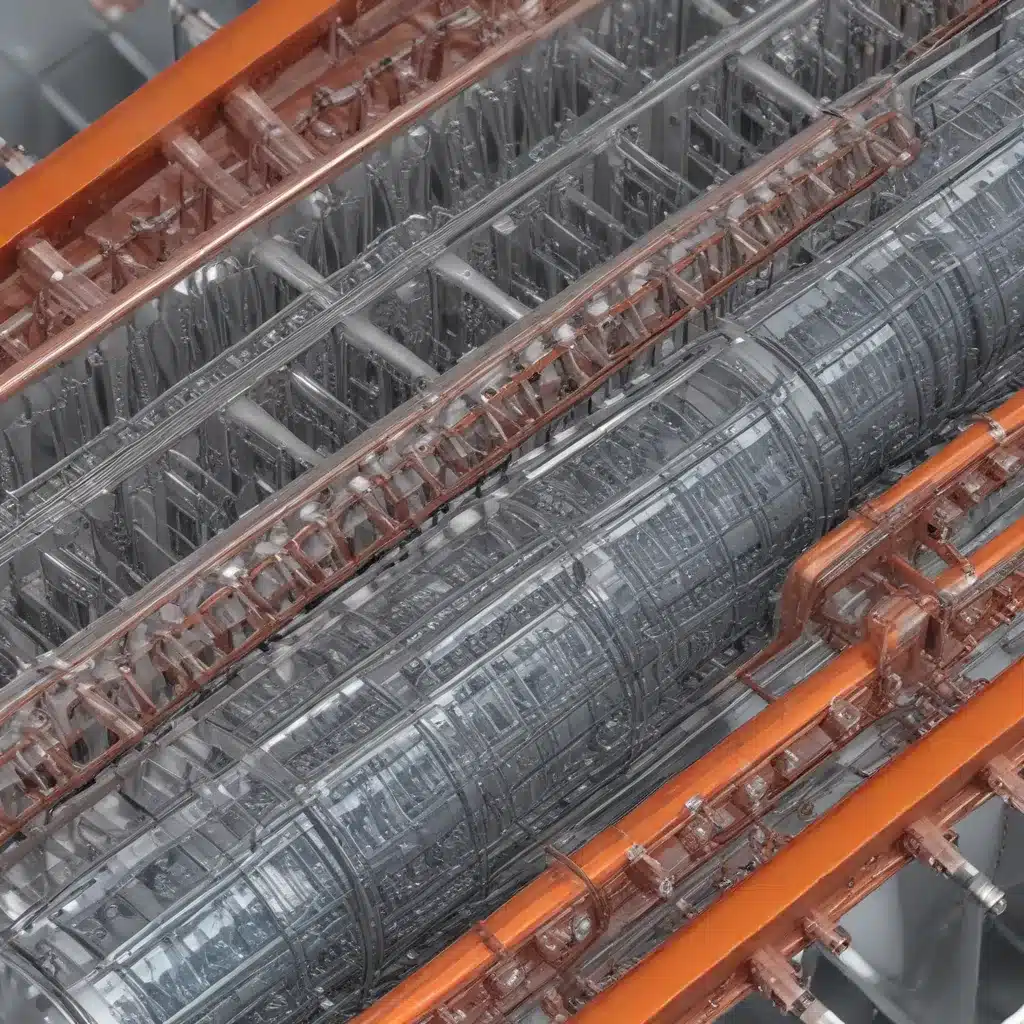
In the ever-evolving landscape of industrial processes, the importance of energy efficiency has become paramount. As a seasoned expert in air-cooled heat exchangers, I’m delighted to share insights on how advanced computational techniques are revolutionizing the design and optimization of these critical components across various industries.
The Rise of Computational Fluid Dynamics (CFD) in Heat Exchanger Design
Computational Fluid Dynamics (CFD) has emerged as a powerful tool in the design and optimization of heat exchangers. This advanced simulation technique allows engineers to create detailed models of fluid flow and heat transfer within complex geometries, providing unprecedented insights into the thermal and hydraulic performance of these systems.
The benefits of incorporating CFD into the heat exchanger design process are manifold. Firstly, it enables a significant reduction in development time and costs, as engineers can test multiple design iterations quickly and efficiently, without the need for extensive physical prototyping and testing. Secondly, CFD provides a deeper understanding of flow patterns and thermal behavior within the heat exchanger, allowing for more informed design decisions and targeted improvements.
Moreover, CFD’s ability to visualize temperature and pressure distributions throughout the exchanger’s components is invaluable. This detailed visualization aids in identifying potential problem areas, such as hot spots or flow maldistribution, which can then be addressed through design modifications.
Finite Element Analysis (FEA) for Structural Integrity and Thermal Performance
In addition to CFD, Finite Element Analysis (FEA) has become an indispensable tool in the design of shell-and-tube heat exchangers. FEA allows engineers to simulate and analyze the structural integrity and thermal performance of the exchanger’s components, including tubes, tubesheets, and shells.
By applying realistic operating conditions, such as pressure, temperature, and thermal expansion, FEA helps identify potential failure points and ensures the heat exchanger can withstand various operating conditions without compromising performance. This analysis is crucial for meeting safety standards and optimizing material usage, leading to safer, more efficient, and cost-effective designs.
Furthermore, FEA aids in evaluating the effects of external loads, such as vibration or seismic activity, on the heat exchanger’s structural integrity. This comprehensive understanding of the exchanger’s behavior under real-world conditions is essential for ensuring reliable and durable operation.
Leveraging Specialized Software for Thermal and Hydraulic Analysis
Specialized software tools, such as HTRI Xist and HTRI XACE, have been developed specifically for the thermal and hydraulic analysis of shell-and-tube and air-cooled heat exchangers, respectively.
HTRI Xist is a powerful software tool that utilizes advanced algorithms and a vast, proprietary database of experimental and field data to predict key performance metrics, such as heat transfer rates, pressure drops, and overall efficiency. This software is widely used across various industries, including chemical processing, power generation, oil and gas, and HVAC systems, where precise heat exchanger performance is critical.
HTRI XACE, on the other hand, is designed for the analysis of air-cooled heat exchangers. It considers factors like airflow distribution, fan performance, and finned tube arrangements, enabling engineers to evaluate and enhance the exchanger’s effectiveness. By providing accurate performance predictions, XACE helps ensure that air-cooled heat exchangers meet desired specifications and operate efficiently in real-world applications.
Optimizing Air-Cooled Heat Exchanger Performance
Air-cooled heat exchangers play a crucial role in various industrial processes, and their performance is heavily influenced by factors such as airflow, fan efficiency, and heat transfer effectiveness.
Fan performance is a critical component in the overall efficiency of air-cooled heat exchangers. Engineers can use software tools that incorporate fan curves, which represent the relationship between airflow and pressure at different speeds. By inputting operating conditions like ambient temperature and air density, along with the heat exchanger’s design parameters, these tools can calculate the expected airflow, pressure rise, and power requirements. This analysis ensures the fan delivers adequate cooling performance while maintaining energy efficiency and meeting the system’s thermal requirements.
Moreover, advanced multi-objective optimization techniques are employed to find the best compromise solutions when balancing competing design objectives, such as thermal performance, pressure drop, and material costs. Engineers can leverage a variety of commercial and open-source software packages, including PV Elite, SolidWorks Simulation, ANSYS, and COMSOL Multiphysics, to tackle these complex design challenges.
Altex Industries: Leveraging Advanced Computational Techniques for Enhanced Heat Exchanger Design
At https://www.aircooledheatexchangers.net/, we take great pride in our expertise in air-cooled heat exchanger design and optimization. Our team of seasoned engineers utilizes a combination of empirical correlations, CFD simulations, advanced FEA modeling, and cutting-edge optimization algorithms to enhance the performance, efficiency, and reliability of your heat exchangers.
By incorporating these advanced computational techniques, we are able to:
- Reduce development time and costs through rapid virtual prototyping and testing
- Optimize heat exchanger designs for maximum thermal efficiency and energy savings
- Ensure structural integrity and compliance with safety standards through detailed FEA analysis
- Predict and improve airflow distribution, fan performance, and overall heat transfer effectiveness
- Find the best compromise solutions by balancing competing design objectives
Our strategic location in Edmonton, Alberta, Canada, allows us to provide comprehensive engineering, procurement, project management, and fabrication services, ensuring seamless project delivery and responsive support throughout the life cycle of your heat transfer equipment.
Whether you’re designing a new air-cooled heat exchanger or looking to optimize the performance of an existing system, we invite you to reach out to Altex Industries and discover how our advanced computational methods can transform your heat exchanger design and performance.

